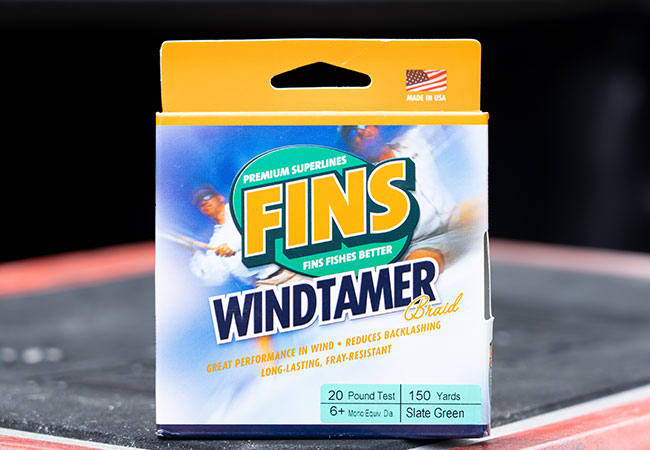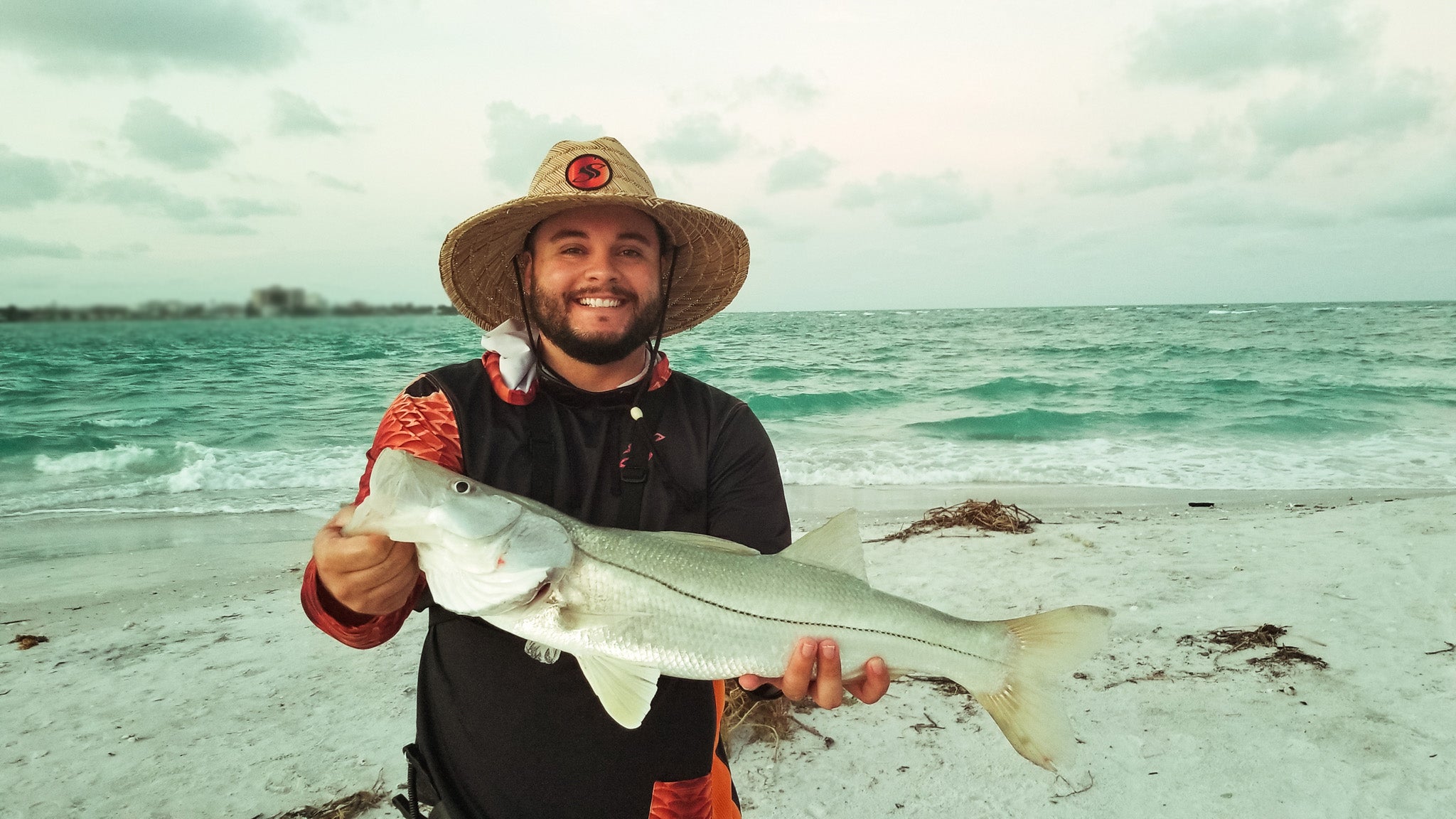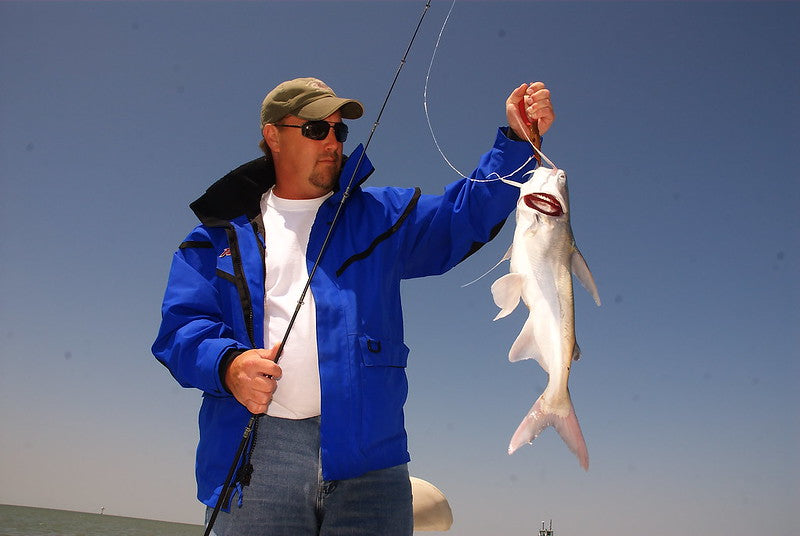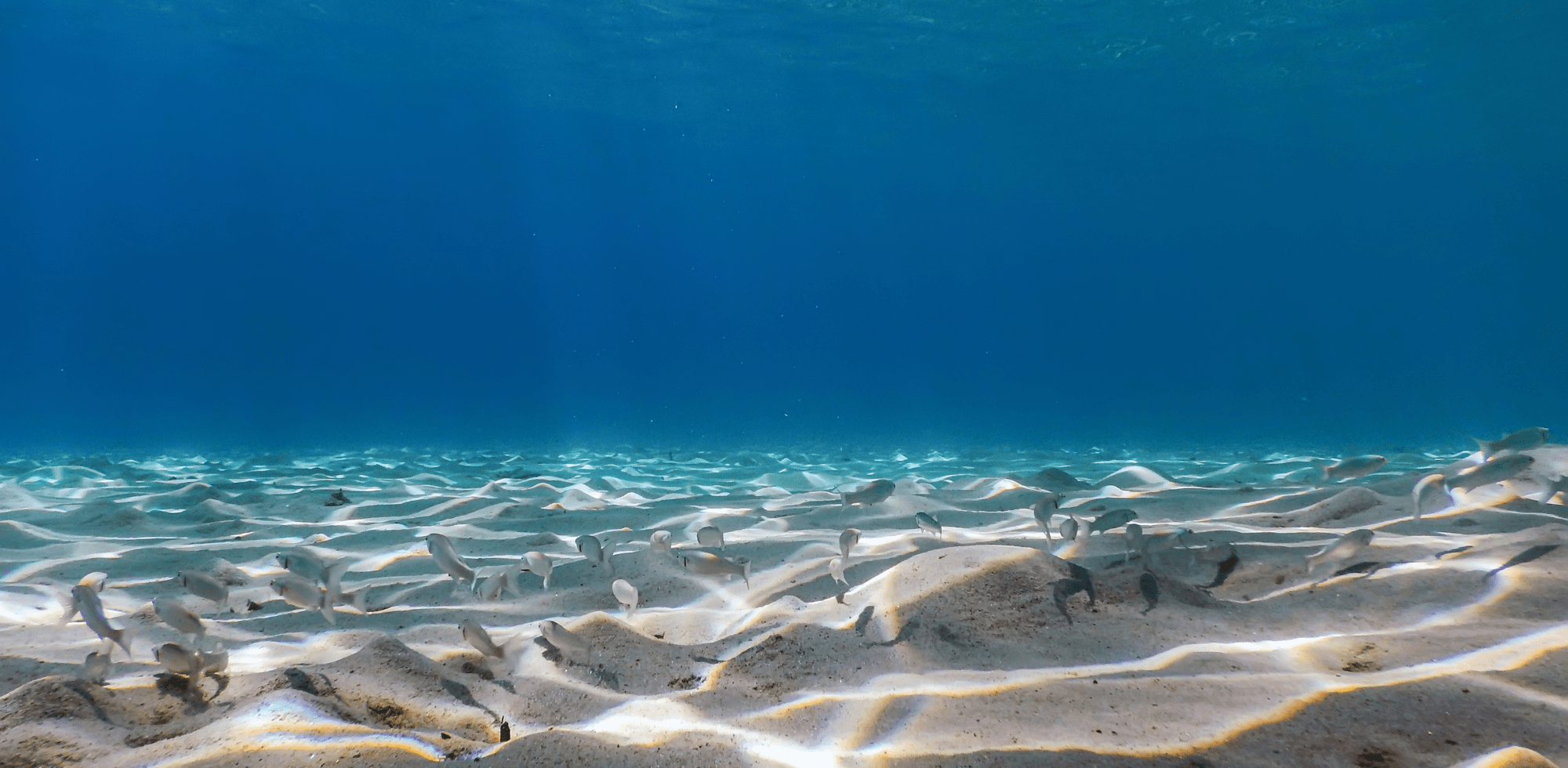Braided Fishing Line
FINS brand of braid is one of the hottest products on the market and has taken the fishing industry by storm. Anglers, pros, and critics alike are singing its praises, and it has quickly found a spot on almost every "Best of" list. But it is not the first braid to do so, and many of those earlier products are now just part of the pack among a host of competitors. Are FINS' claims valid? Or is their marketing team better than their product?

While there are still plenty of anglers who prefer other types of lines, there are very few who have never used braid. Most anglers use it in at least limited applications. Regardless of which camp you find yourself, it is hard to ignore the fact that the braided line changed how we fish. It does not stretch; the tensile strength is incredible, and the diameter is much smaller than any other option. The angler can feel every bite, bump and change in bottom contour or composition, pack more line on the reel, and handles a multitude of species with the same setup.
But the highspeed performance comes at a cost. The thin diameter line is prone to wind knots. There is a tendency for the line to dig into the spool when under pressure, burying itself and making it difficult to cast or draw that line out again. Finally, the friction caused by thin, often abrasive lines is exceptionally damaging to guides.
But FINS claims to have solved these problems. They claim that their braid series can be cast as well as monofilament without tangling, retrieved without burying, and without the damaging abrasive texture of other braids. All the advantages and no disadvantages. But how do they do it?
FINS' braided line utilizes Spectra fiber. But Spectra fiber is not a FINS secret ingredient. Honeywell produces Spectra, and Spectra is used by plenty of other braid makers. The secret to FINS' line of products is in how they use it and what they do to it during the post-processing phase.
Spectra fiber is patented gel-spun fiber developed by Honeywell. In its original form, it is white, water-resistant, less susceptible to damage from chemical or sunlight, and up to 15 times stronger than steel. On its face, it is the perfect material for producing braided line IF you are willing to look past the negatives listed earlier. Of course, this is what other braid manufacturers expect you to do and hope that the majority of anglers will decide the positives outweigh the negatives. FINS has determined to conquer the negatives instead of accepting them.
First, FINS has woven its line into a round shape that is stiffer than other braids and then finished with a proprietary treatment for a smoother surface. Doing so allows the line to pack evenly and lay on top of itself instead of becoming buried in the underlying layer. It eliminates wind knots, tip wrapping, and backlash. Plus, it is far less abrasive, so damage to guides in reduced while casting performance increases. A final feature that makes FINS stand out is its wide choice of colors. Depending on which line you select, you will have a choice of bright yellow, green, white, or even pink. While this may appear to be more gimmick than a feature, it does allow for better visibility.
But does it work?
There is no doubt that FINS has solved many of the problems anglers face when using braided line. But not necessarily all of them. Plus, fixing one problem sometimes leads to another. So, the question is," Has FINS achieved the best balance possible?". Let's look at the good news and bad news; then you can decide whether it is worth a try.
The Good
By all accounts, FINS seems to have overcome one of the chief complaints regarding braid, the dreaded wind knot. Even in extremely windy conditions, anglers report that wind knots are no longer an issue for the most part. Tip wraps were also absent, and the backlash was usually the result of angler error and not because the line performed poorly. Furthermore, this was the case throughout the life of the line. Whether out of the package or at the end of the season. It still outperformed many other brands in each of these areas.
Although the FINS line did not bury itself on the spool, it did settle. In most cases, this was a minor issue and fixed with a few long casts. However, it means that problem number 2 was not completely solved — a significant improvement, no doubt, and still worth a gold star.
The various colors available do turn out to be an advantage rather than a gimmick after all. Guides or those teaching a new angler will find it useful when trying to keep track of where lines are going. Anglers who have multiple rods rigged and ready to go will appreciate the ability to identify different line setups at a glance. Plus, it does not seem to interfere with its fish catching ability.
The line is smooth. Not only does this reduce abrasion, which in turn increased casting ability and limits guide damage. Plus, a more fluid line not only performs better, but it is also quieter than traditional braids. No more screeching as it slowly grinds your inserts away.
FINS offer their line in a variety of styles, each intended for a specific technique and specially manufactured or finished to perform better than other options.
Windtamer – specifically designed for use in high wind conditions without the frequent wind knots or tip wraps braid users usually expect. It also withstands the strain of big fish without burying deep in the spool. Perfect for lure anglers who are repeatedly casting. Available in green, pink, white, or yellow.
Original PRT – soft, flexible braid impregnated with urethane-based polymer for a durable, fray resistant braid with an "already broken in" feel. Specially designed for fishing in dense structure. Available in green, white & yellow.
The line features a 40G - composite structure comprised of an ultra-high-strength core and tightly woven over the braid. The result is exceptionally smooth, round braid with the smallest diameter to strength ratio available. Available colors include blue, chartreuse, green & white.
Hollow Core – constructed utilizing 16 ends for easier slicing and smooth knotless transition when inserting leader material. Also available in Metered Colored version to allow easy detection of just how much line is out. Available in white & yellow.
Downrigger Braid – specially designed to replace steel cables, providing all the strength without the kink or rust.
XS – high tenacity eight end braid for a firmer, round line that packs tightly on the reel without burying. It allows anglers to load the reel with more line, perfect for deepwater application.
Sling Braid – offers an extremely supple feel, excellent choice for spinning and baitcasting applications with delicate bait presentations. No more interference from the line means the most dependable action possible. Available in chartreuse and light green.

The Bad
As stated before, achieving a positive often results in a negative. Although FINS has done a lot in terms of eliminating the negatives, some still exist.
One of the biggest disappointments is the fact that FINS brand braid is LESS abrasion resistant than many of the competitors. One of the main reasons anglers select braided line is its ability to withstand abrasion, especially when fishing structure. Unfortunately, not all braided line is created equal and when it comes to this category FINS is not at the top of the pile. If abrasion resistance is a top priority, consider the Original PRT series.
If you are a spin angler, you may also find FINS disappointing, or at least lacking when compared to other options. While many of the lines will work in a spinning reel without specific failure or problems associated with other brands, they do not achieve peak performance. Baitcasters will operate fine with any of the lines. Still, spinning reel users should consider the Sling Braid for maximum performance.
The price tag is higher. It should come as no surprise that FINS lines will cost more than other braided line brands. After all, they claim to offer a better product with broader application possibilities. However, many anglers will find the 30-40% increase in price to be a bit more than expected. If you fish a lot, this may not be a concern as you are sure to get your money's worth. However, the occasional angler will find it difficult to justify.
Conclusion
After careful review, it is hard to argue that FINS has not revolutionized the braided line market. They have successfully addressed many of the core complaints anglers have held since day one. In most cases, they have successfully defeated many of the hurdles faced by fishermen and produced a product for a wide range of applications. Yes, there are some drawbacks. No product is perfect, and this is to be expected. As with any tackle or tool, there are times when it's the best tool available, and there are times when it is not.





1 comment
jeff
What is your feedback on Fins now that it’s been a few years with new owners?
Thank You
Jeff
What is your feedback on Fins now that it’s been a few years with new owners?
Thank You
Jeff